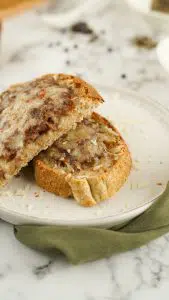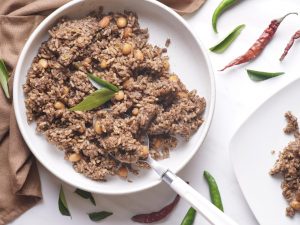Does Horseradish Go Bad?
Important Note: When you buy through our links, we may earn a commission. As an Amazon Associate we earn from qualifying purchases. Content, pricing, offers and availability are subject to change at any time - more info.
Whether you use horseradish as a prepared condiment or in a sauce, you’re probably familiar with the mustardy punch for which horseradish is well-known. This pungent taste is released when horseradish is cut or mashed, but the mustard oil that produces this flavor slowly dissipates. Horseradish will lose its spicy taste over time even when refrigerated but will keep for much longer even though it is not as intensely flavored.
Horseradish paste made with vinegar will keep in the fridge for a few months but lose its flavor as the oils degrade. Horseradish sauce mixed with mayonnaise or sour cream will have a shorter shelf life once it has been opened. Unopened jars will last longer if kept in a cool, dry place.
Horseradish may be most familiar to you as paste that comes already prepared, but you can also buy the root whole and prepare it yourself. While horseradish has a relatively long shelf life if kept in a cool pantry away from moisture, prepared jars of horseradish paste or sauce will have an expiration date that you should consider. We will look at how to tell if horseradish has gone bad, depending on whether it is whole or prepared, and how best to store your horseradish.
- Does Horseradish Go Bad?
- How To Tell If Horseradish Is Bad?
- Can You Use Horseradish After It Expires?
- Can You Get Sick From Expired Horseradish?
- How To Store Horseradish
- How To Store Horseradish Sauce
- So, Does Horseradish Go Bad?
Does Horseradish Go Bad?
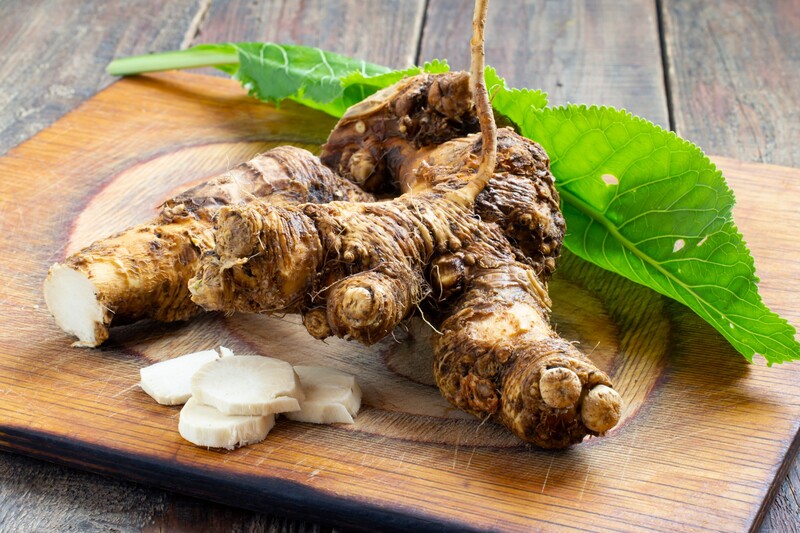
Horseradish comes from the same family as mustard and cabbage and is a root vegetable. It has been used worldwide for centuries to season food and condiment. Horseradish also has a long history of use as a medical and herbal treatment.
We prepare horseradish condiments by grating or crushing the thick white root and using vinegar as a preservative. You may be most familiar with horseradish as wasabi paste, where it is colored green and used as a cheaper, more readily available substitute for the real thing.
When horseradish is grated, the crushed flesh releases an enzyme is released, which is part of the plant’s defense system. This enzyme is responsible for the bitter, sharp taste we associate with horseradish and other condiments from the mustard family.
Horseradish Root
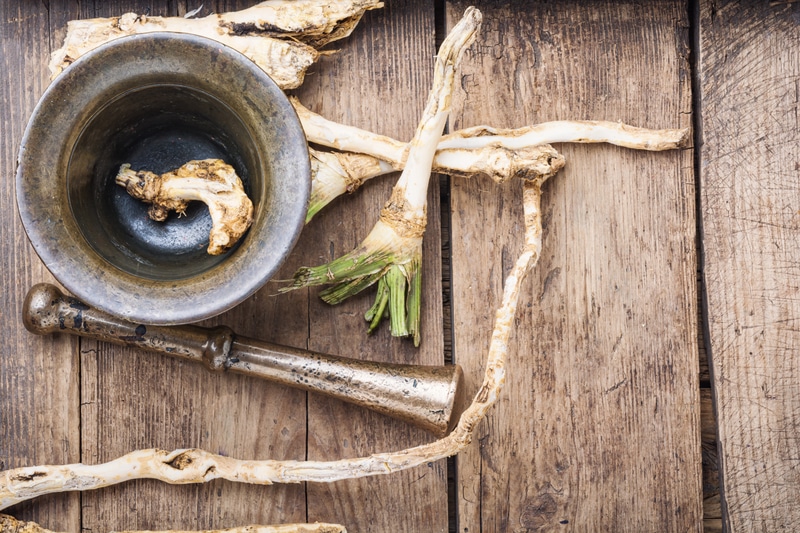
Since it is a plant, horseradish root can go bad, but it generally keeps for a long time under the right conditions. While it’s available year-round in most American shops, the best season for fresh horseradish root is in spring. The root is often sold in small 2-inch sections, and if the root pieces are still fresh when you buy them, they should keep in the refrigerator for about 2 weeks.
Grated Horseradish
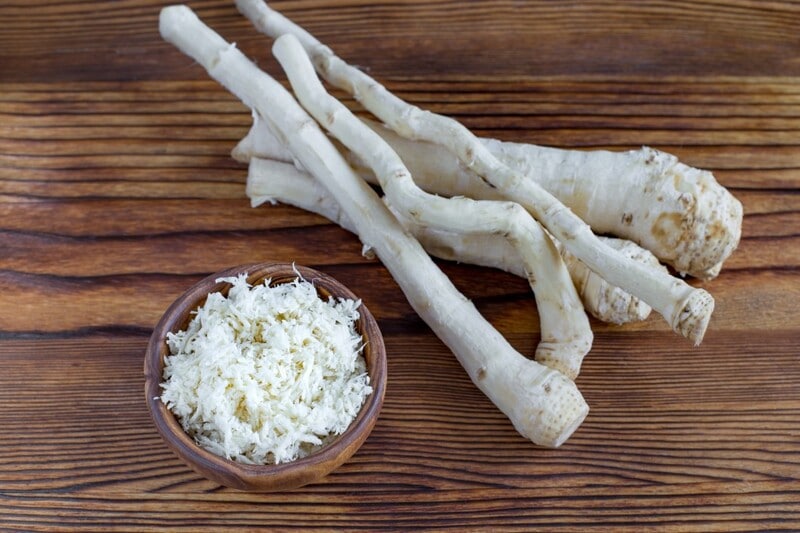
Grated horseradish will very quickly lose its flavor, so you will need to use it within a few days. However, you can make your grated horseradish last a little bit longer by preserving it in vinegar.
If you buy your horseradish already prepared and canned, it will have a best by date printed on it. This date indicates how long the sauce will remain at a higher quality; the taste will begin to degrade after this date. In general, as long as the jar has remained unopened, the horseradish paste or sauce will be acceptable to use within that time. As it is preserved, you will probably be able to use your horseradish for a few months past the listed date.
How To Tell If Horseradish Is Bad?
We’ll look at how to tell if your horseradish has gone off and how to store it properly to keep it for longer.
Fresh Horseradish
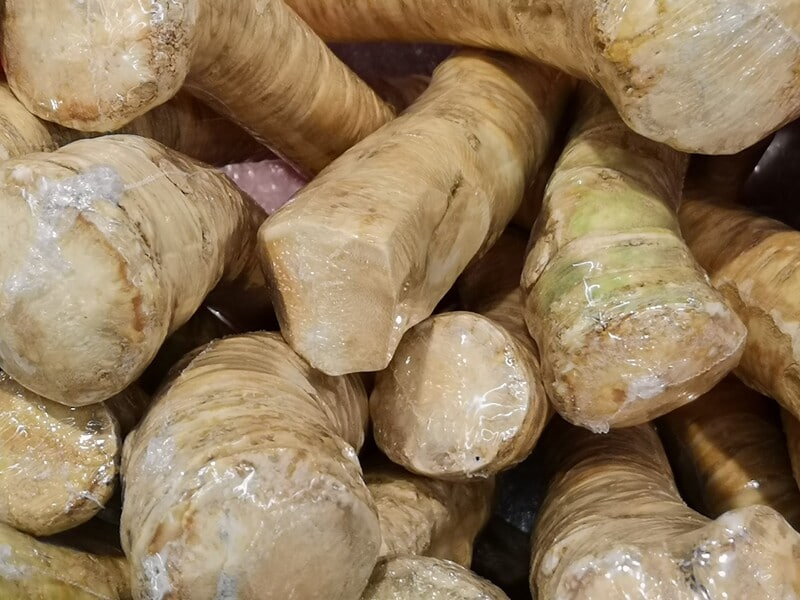
If you’re buying fresh horseradish, you should look for horseradish root that isn’t wrinkled or shriveled. These are signs that the root is already old and has lost moisture.
A fresh root will be firm to the touch and have no soft spots or signs of mold. Don’t buy roots that have begun to rot, although small areas can be cut out if necessary.
Any greenish areas signify that the root has begun to decay and grow moldy. Avoid buying any roots that have started to sprout, as this will also indicate they have been in storage for a while.
If the root has dried out, the pale brown skin of the root will begin to go darker, brownish, and shrivel. The fresh-cut ends will not be firm and white. If the root smells rotten, it should be thrown away and not eaten.
Prepared Horseradish
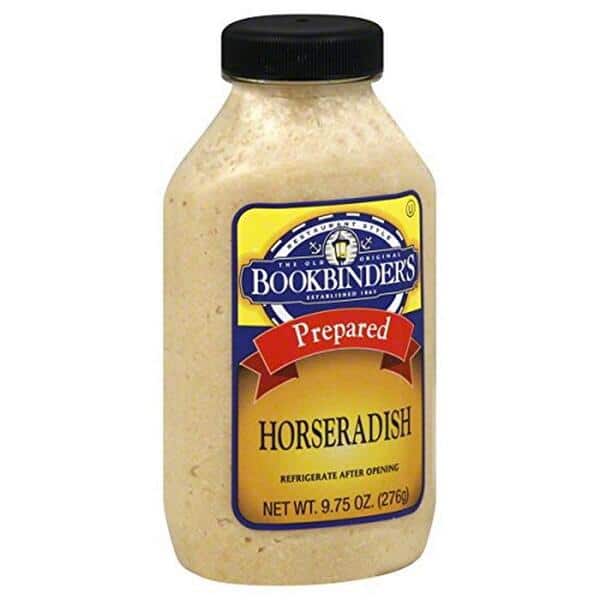
When buying horseradish paste or sauce, the grated or pureed horseradish will have been mixed with either white vinegar or a condiment like mayonnaise. Store-bought horseradish will have a best-by date on the container, which will indicate how long the paste or sauce will remain at its best quality. After this date, the taste of the horseradish will begin to degrade, though this does not necessarily mean you have to throw your horseradish sauce away.
If you are concerned, pay attention to the look and smell of the contents of the jar — if the paste is no longer pale or white but has gone browner and smells off, it should be discarded. The longer an open jar is left in the refrigerator, the more of its pungent taste will be lost as the enzymes decline. Your horseradish paste may not be off, but it will not pack quite the same flavorful punch.
Throw out any prepared horseradish, even if it has not expired, if you notice any of the following:
- Mold in the jar or on the seal
- Pieces of food or dirt that might contaminate the condiment
- The contents smell strange or off
- If the taste has gone bitter or rancid.
Can You Use Horseradish After It Expires?
As long as the store-bought horseradish has not gone off, you should still be able to use it for several months past the expiry date, though there will be some loss of flavor, and it will not have quite the same kick. The longer a jar has sat opened, the quicker it will lose its taste, and the more likely it will become contaminated or bad.
With homemade horseradish paste, you may experience a shorter shelf-life. Usually, homemade horseradish is preserved with the addition of white vinegar. While this means your horseradish should keep in the refrigerator for about 2 weeks, without any other preservatives, it’s best to use it up within this time. Again, if the horseradish looks or smells bad, it is best to throw it out.
Can You Get Sick From Expired Horseradish?
While it is doubtful that you will get sick from eating horseradish that is past its ‘best before’ date, I would advise not eating from a jar that has been opened for longer than a few weeks past the date.
It is much more likely that the horseradish will have lost its zest and taste bland rather than spicy. The taste may also become more bitter. However, if the sauce has gone off due to contamination, then there is a higher chance you could get food poisoning. Do not risk eating horseradish if you see any signs of mold or contamination, if it smells strange or sour, or if the taste has gone off.
Some people may react badly to the horseradish’s mustard oil, which gives it a distinctive flavor. While this is rare, some signs would be skin irritation, an upset stomach, vomit that contains blood, and diarrhea. This would only usually happen if an excess of horseradish is consumed.
Similar signs such as upset stomach and fevers are also symptoms of food poisoning. While horseradish is unlikely to cause food poisoning, any food that has been contaminated can cause problems. If you feel concerned about how safe your horseradish sauce is, do not consume it; throw it away rather than take the risk.
How To Store Horseradish
Fresh Horseradish Root
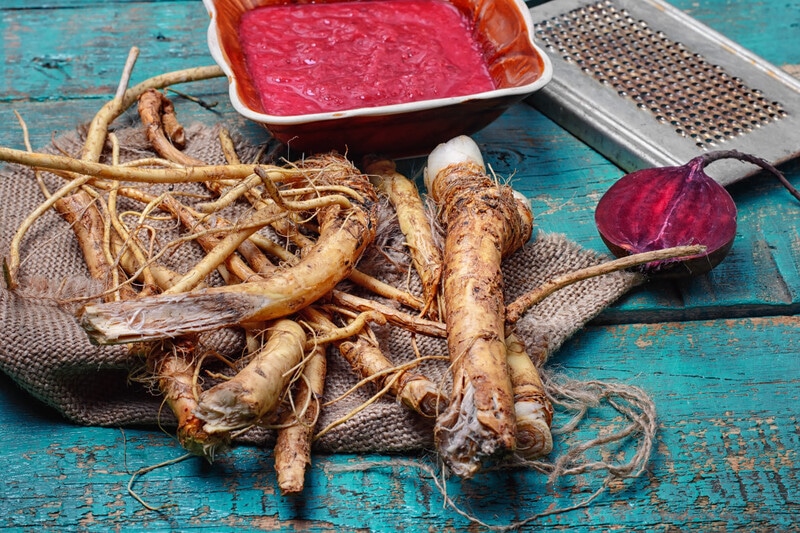
If you have a whole fresh root, you can store it in the fridge for about 4 weeks. However, if the root you bought has already been cut, this will shorten its shelf-life. Expect cut horseradish root to last about 2 weeks in the fridge.
There are a few ways to prolong the life of your horseradish root. Leave the root unwashed as moisture will make the root rot faster. Place the root in an open plastic bag and keep it in the crisper drawer of your refrigerator. Once the root is cut, it will begin to dry up, so if you have an excess of horseradish, you might want to think about preserving it using vinegar or by freezing it.
We recommend grating horseradish and mixing it with white vinegar, which will keep for about 3 months in the fridge. Only a few steps are required:
- Wash and peel the root, ensuring you cut away all dark spots
- Rinse and dry the peeled root
- Grate the horseradish and salt to taste
- Place the grated horseradish in clean jars that can be well-sealed
- Cover the grated horseradish with white vinegar
However, the prepared mixture will lose its pungency rapidly, so for the best taste, we suggest using it sooner than that — within about 3 to 4 weeks.
You can make your preserved grated horseradish and vinegar into horseradish cream or sauce by mixing 2 Tbsp grated horseradish into 1 cup sour cream or 1 cup mayonnaise. Use this homemade sauce within a week or 2.
Freezing Horseradish To Stop It Going Bad
Freezing is not an ideal way to store horseradish, as it causes the root to lose some of its spicy flavors. However, this might be more suitable for your needs. In this case, we suggest freezing the grated horseradish (not whole!) in an ice tray. Seal the ice tray by placing it inside a freezer bag to avoid the taste of freezer ice on your horseradish. This ice tray system allows you to remove only a tiny portion at a time, as necessary.
Frozen grated horseradish will keep for up to 6 months.
How To Store Horseradish Sauce
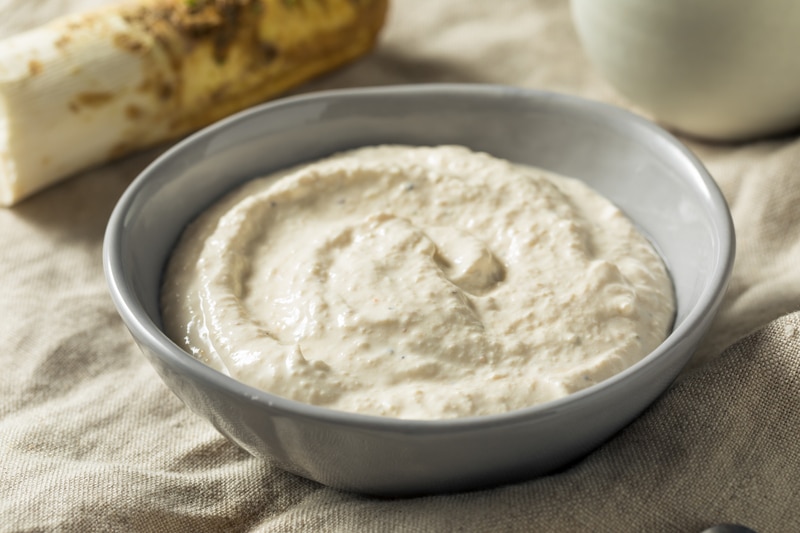
Store-bought horseradish should be used before the ‘best-before’ date, as this will be when its flavor is most intense. However, if the horseradish has not gone off, it will still be fine to eat after the stamped date. If the jar is unopened, you can store it in a cool, dry place such as a pantry — just as you would any unopened condiment such as mustard or mayonnaise.
Once the jar has been opened, it is best to use it as quickly as possible to enjoy the full, punchy flavor. You can even use it as a substitute for Dijon mustard in a pinch!
Some tips to keep the contents as fresh as possible are:
- always keep it in the fridge
- keep the lid tightly closed
- place the jar upside down
- use only a clean spoon to remove any sauce
- never dip food or dirty cutlery straight into the jar
Does Horseradish Sauce Need To Be Refrigerated?
Horseradish paste or sauce in an unopened jar needs only to be stored in a pantry or a dry, dark, and cool cupboard. As long as the jar’s seal is unbroken, the contents should be acceptable for several months. It is recommended to discard any unopened condiments 6 months past their listed expiration date.
However, once you open a jar, you need to keep it in the fridge and consume the contents as soon as possible. Keeping it in the refrigerator helps prevent bacteria or mold from growing, but the taste will deteriorate when the jar has been opened. Although the horseradish should still last another month or more, it will lose its pungency.
So, Does Horseradish Go Bad?
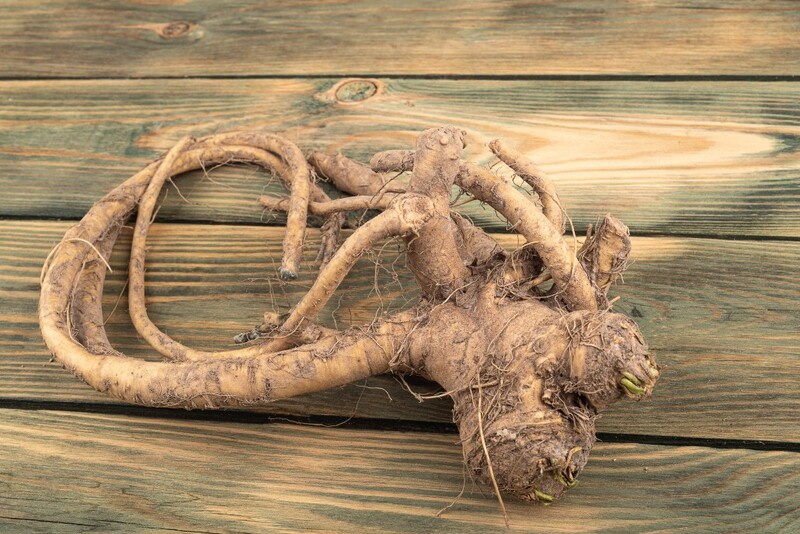
Store-bought prepared horseradish has a relatively long shelf life if unopened and can be used past its ‘best-by’ date. Always check the contents of an opened jar before using it to determine if there is any mold or contamination, or if the sauce smells off, discard any unused sauce that looks or smells wrong. Once opened, the sauce will still be fine for a few months if kept in the refrigerator, but the taste’s intensity will decline rapidly once the horseradish has been exposed to air.













